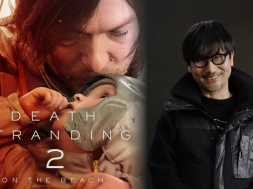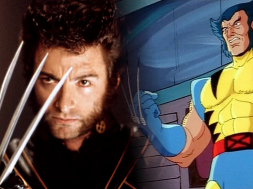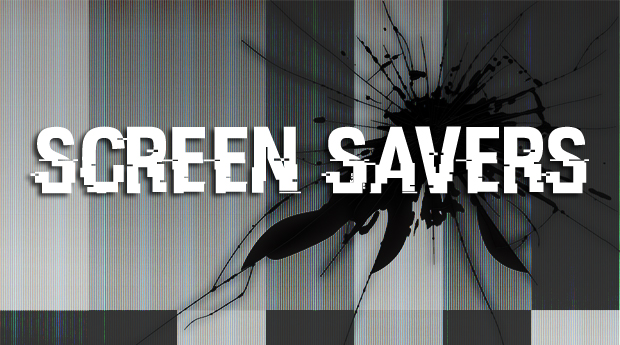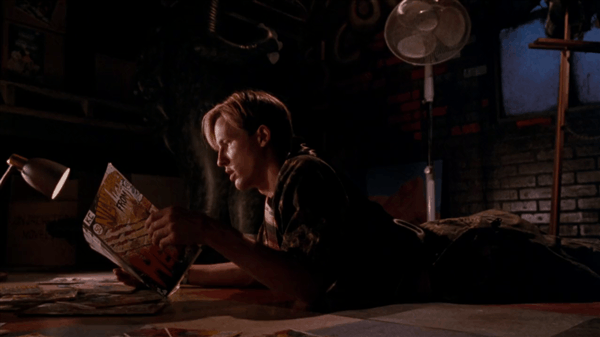In honor of the late, great Wes Craven, I decided to revisit some of his legacy for this week’s Screen Savers. The vast majority of Craven‘s stamp on the world has been positive, but not all and especially not everything to do with his burnt boy wonder, Freddy Kreuger. There will likely forever be discussion over which is the best A Nightmare On Elm Street between the first or Dream Warriors, with New Nightmare being a solid third, but outside of those three the rest of Freddy’s outings are practically cast aside, unworthy of the same kind of consideration. It’s hard to argue against this logic what with the reputation for horror sequels to be just awful as a rule, especially later sequels. I mean, name me a fifth or sixth instalment 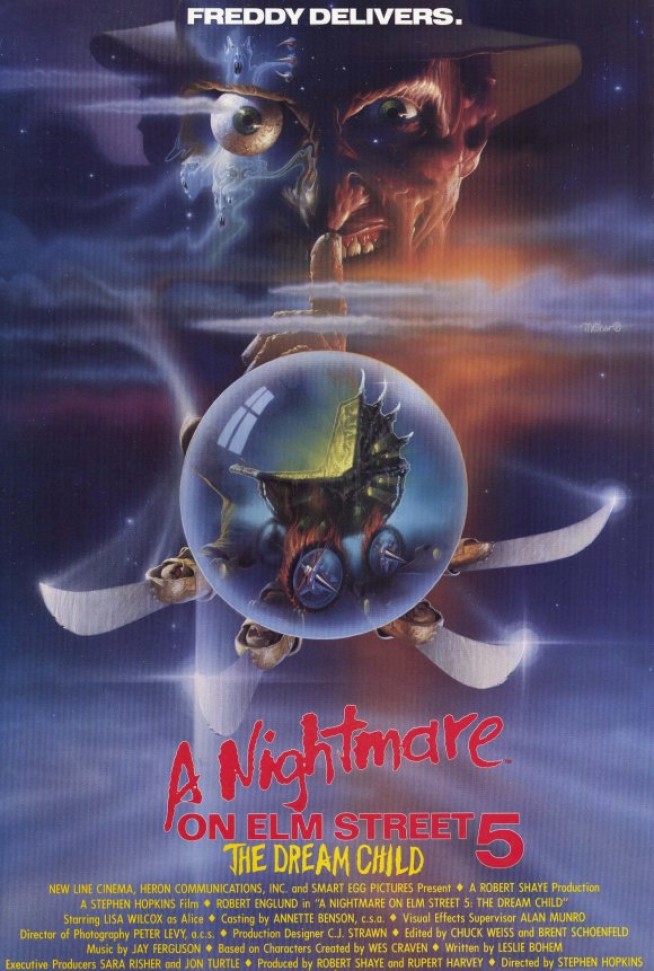 that’s anywhere near as good as the original it spawned from – difficult right?
that’s anywhere near as good as the original it spawned from – difficult right?
So, for the first time in what must be a decade, I sat down to watch A Nightmare On Elm Street 5: The Dream Child. The only time this movie even comes up in conversation amongst my circles is to laugh at the ridiculousness that ensued whenever Craven wasn’t in the writer’s seat. Even when trying to second guess the status quo about the film, it gets brought up that the direct siblings to The Dream Child are The Dream Master before it and Freddy’s Dead: The Final Nightmare after, and let me tell you, neither of those are a vote of confidence.
Much of the criticism pokes fun at the hammy performances and move away from outright horror the series had started out embedded with. And, yes, these are present, but they aren’t necessarily defects in the design. Rather, specially the latter, they show a maturation of the series as a whole, attempting to both push forward the mythos of Freddy himself as well as tackle other issues with the underlying subtext. The protagonist here, Alice, who was introduced in The Dream Master, is shown making love to her boyfriend during the opening credits, which leaves her pregnant. In the actual opening scene, Alice is thrust into a nightmare sequence in which she, dressed in a nun’s outfit with the nametag “Amanda Kreuger”, is swarmed by a bunch of inmates from some sort of dank asylum before she wakes back up. Chalking it up to some light PTSD, she then goes to her high school graduation.
The movie’s story pivots on this early sequence as the whole premise is that Alice’s pregnancy is in danger of being co-opted by Freddy Kreuger and the only way to stop him this time is to free his mother – you guessed it, Amanda Kreuger. Freddy, played as always by Robert Englund, makes his on-screen return in a small church in a grandiose gothic pastiche that sets the standard for the kind of imagery Alice’s dream sequences will be shrouded in. Unlike earlier films in the franchise where it was clear when characters were in a dream and when they weren’t, The Dream Child uses the trauma Alice harbors from her encounters with Freddy as a way to merge both the real world and the nightmares, having an almost 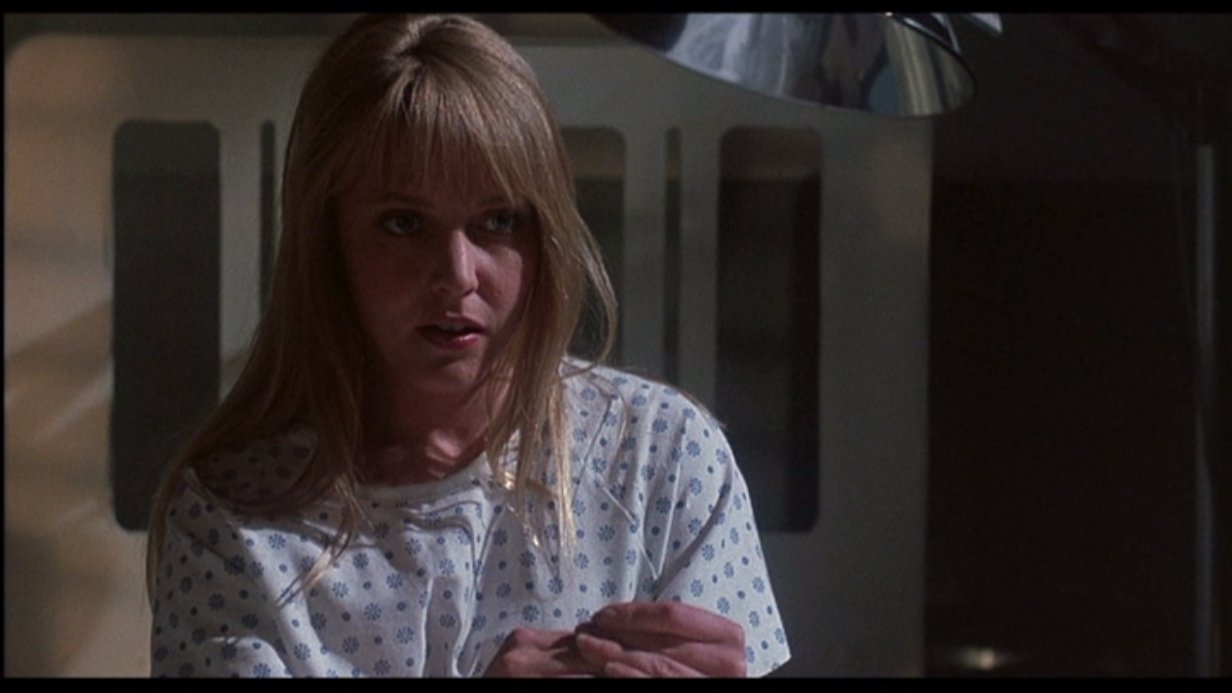 psychedelic effect in places. Naturally, this doesn’t remove any of the other victims from risk, but it does allow the creators to make the film a little less predictable when compared to previous instalments and have some very cool sequences with a slight air of mystery.
psychedelic effect in places. Naturally, this doesn’t remove any of the other victims from risk, but it does allow the creators to make the film a little less predictable when compared to previous instalments and have some very cool sequences with a slight air of mystery.
Alice’s boyfriend, Dan (Danny Hassel), for instance, dies in a horrific car crash, but in his dream Freddy merges him to a speeding motorbike, literally trapping him in this bio-mechanical speeding death-trap. The two are shown parallel to each other in the film, so it isn’t made clear he’s actually dead until Alice is told in the hospital later, when she’s told she’s pregnant. One of her friends, Greta (Erika Anderson), is over-fed to death in a ghoulish scene very akin to the likes of the Bill & Ted films and Beetlejuice (which came out the previous year). Alice experiences Greta’s death by way of seeing her fridge full of food turn to mold right in front of her eyes and, again, it’s unclear Greta’s actually dead until the film explicitly says so.
The blurred connection between the waking and dream world is never quite fully explained, but the movie runs with the idea that Freddy is haunting Alice’s unborn son’s dreams while he’s in her womb still. No, that doesn’t make sense and it only adds to the feeling that this wasn’t meant to be an A Nightmare On Elm Street film. The second half essentially becomes a parable on teenage pregnancy, with the horror stemming from concerns over Alice’s mental state and the potential corruption of her child, Jacob, by Alice’s troubled past. The best acted scene in the whole film is a stand-off between Alice, her father and her dead boyfriend’s parents as they attempt to convince her to let them raise the child themselves. Very emotionally fraught, it’s like a scene from a different, more involved emotional chiller about teenage 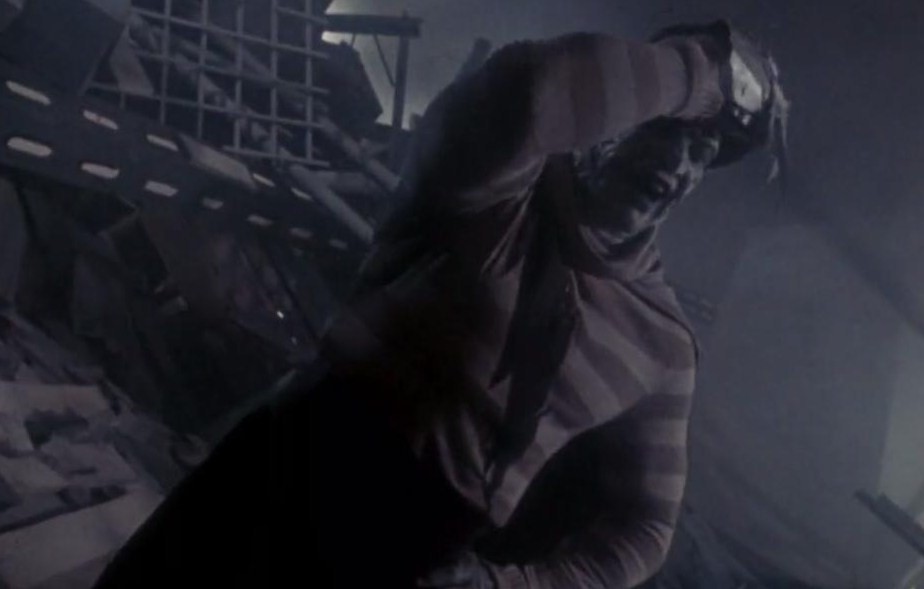 pregnancy and the kind of difficulties that can surround being a teenage mother with mental health issues having to juggle graduating high school and a having a kid. Then the movie just goes back to teenagers fighting Freddy.
pregnancy and the kind of difficulties that can surround being a teenage mother with mental health issues having to juggle graduating high school and a having a kid. Then the movie just goes back to teenagers fighting Freddy.
This isn’t to say the final act is without merit as a Nightmare On Elm Street movie – it contains one of Freddy’s best kills. Freddy fights one teen in a comic book-inspired duke out in which the teen, Mark (Joe Seely), becomes a superhero he invented to battle Super Freddy. But that’s a stark contrast to what’s actually driving the plot forward at that point, which is Alice and friend Yvonne (Kelly Jo Minter) trying to find where Freddy’s mother’s spirit is being held captive in order to free her and stop the clawed menace for good. When we finally see Alice, the dream version of her son Jacob and Freddy have a stand-off, it’s in a huge low-out that thematically doesn’t really have anything to do with killing Freddy per say. Rather, I cared more about seeing Alice put her troubled past behind her and move forward with her son, free of the restraints of a past best left as just that.
Coming out in 1989, it’s easy to see why The Dream Child looks and feels as it does. Evil Dead, Near Dark, The Lost Boys, Beetlejuice and Return of the Living Dead had all happened, changing how horror and horror stories were being told in mainstream cinema. The Dream Child is like a direct reflection of the change in that trend, being more about its characters and their story than the icon Freddy and his murders. The special effects are amazing for the time and really hold up and Lisa Wilcox‘s performance is actually a lot deeper and more involved that most other teenage scream queens. The only problem is that the pseudo-Rosemary’s Baby-styled screenplay really would have been better served as a standalone movie, rather than having Freddy’s presence interrupt the more wholesome narrative elements. There are reports that claim the script was heavily handied around between writers and you’d really believe it.
When I was a teenager, I probably disliked this out of not knowing any better and believing it should all be about Freddy Kreuger. If all you want is senseless terror from the dream killer, than this is as bad as they say. If you enjoy your horror with a little more going on underneath, then this is much better if you give it a chance.

